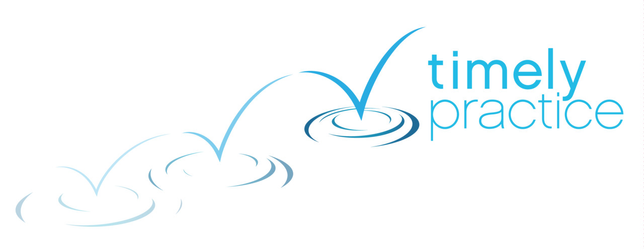retrieval practice cycle
The timely practice app ensures that learners are more likely to retain their learning by timely practice of questions.
The app schedules the reviews - i.e. a practice question - using increasing interval retrieval practice or spaced repetition system (SRS) to maximise retention of learning with the minimum number of questions.
Traditional teaching supposes the model of teaching and learning ends after the teacher has found that the learner has learned "it", - the teacher and learner behave as if that is the end of the learning experience i.e. after a (single or a few) positive assessment(s) every one can say "job well done".
teach - practise - learn - assess - "job well done"
Whereas the timely practice app replaces the "job well done" with a rolling maintenance program.
wait - practise - assess - repeat
This cycle: wait - practise - assess - wait - practise - assess etc is the retrieval practice cycle.
The increasing interval retrieval practice or spaced repetition system (SRS) which timely practice uses, is a way of deciding how long the - wait - part of the cycle should be.
The timely practice logo shows the "compound interest" the learner gets from each practice or review. After every review (skim on the water) the learners memory of "it" becomes stronger and lasts for longer.
The retrieval practice cycle (from the teacher and learner perspective):
the teacher creates a timely practice assignment - which asks the learner a questions on some layers (chosen by the app) from the ready layers,
the learner completes the assignment - asking for help if they need it,
the teacher assess the assignment,
etc
The retrieval practice cycle (from the timely practice app and layers perspective):
After the teacher assess a question from a layer,
if the question is answered independently and accurately the app increases the interval;
if the question is answered incorrectly and the teacher judged it needed feedback (because the learner is not accurate or has forgotten or muddled some of the steps) the app decreases the interval;
if the question is not answered (despite the learner having enough lesson time, and the teacher deciding that feedback might work) then the need for feedback is urgent and the app will dramatically decrease the interval;
if the teacher decides that the question is not answered well enough and feedback won’t be worth it (we call this BELL = BEst Learned Later) then the app will remove the layer from the retrieval practice pool and put it in the best learned later pool;
The layers in the retrieval practice pool wait until they are chosen to go into a timely practice assignment again.
The layers in the best learned later pool wait until the teacher decides to teach them again.
When the app increases the interval
The timely practice app
calculates the new depth of learning (the duration that the learner is known to have reliably remembered the layer for - if the layer was asked very late the app will increase this depth - but may not increase it to the actual wait, as the app won’t always consider the actual wait a reliable indicator),
calculates the ready date (the earliest date the app thinks the next question from the layer should be asked - so that the duration the learner will be able to remember the layer for is stretched) and
calculates the overdue date (the date the app would like the next question from the layer to be asked by - so the learner won’t have forgotten how to answer questions within the layer)
When the app decreases the interval
The timely practice app
calculates the new depth of learning (the duration that the learner is known to have reliably remembered the layer for - if the layer was asked very late this won’t be adjusted this time, if the layer was asked within the ready to overdue date range then this duration will be reduced),
calculates the ready date (the earliest date the app thinks the next question from the layer should be asked - so that the learner will still be able to remember the feedback and layer for) and
calculates the overdue date (the date the app would like the next question from the layer to be asked by - so the learner won’t have forgotten the feedback and how to answer questions within the layer)
